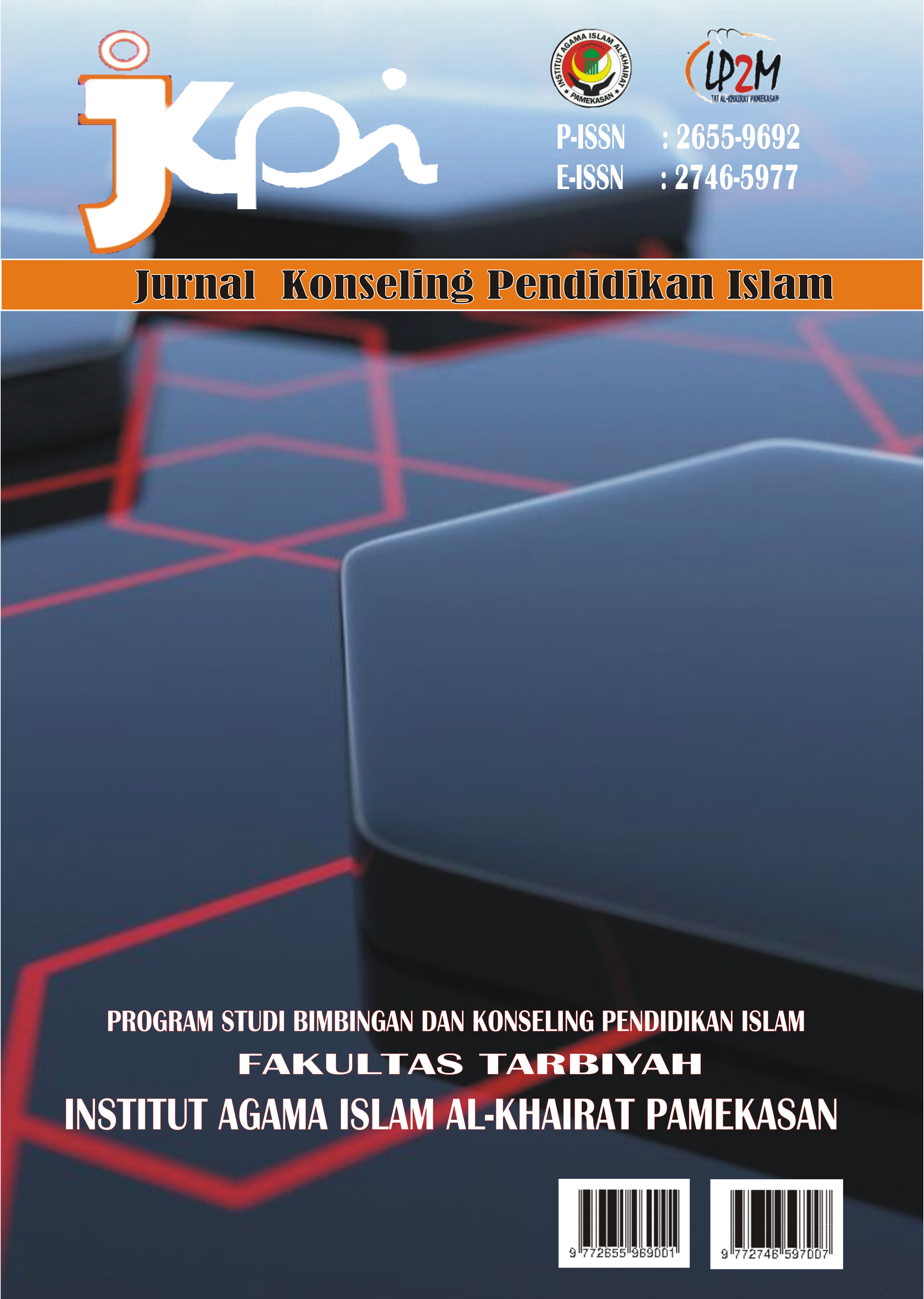FULL DAY SCHOOL AND HALF DAY SCHOOL ON STUDENT LEARNING ACHIEVEMENT AT JATI AGUNG AL QADIRY HIGH SCHOOL AND YPM 4 BOHAR SIDOARJO COMPARATIVE STUDY Section Articles
##plugins.themes.academic_pro.article.main##
Abstract
This study aims to analyze the differences in learning achievement between students who follow the Full Day School and Half Day School system at the Junior High School level. The research method used is a comparative quantitative study with an Independent Samples T-Test approach. The research sample consisted of 60 VIII grade students, 30 students each from Full Day school and 30 students from Half Day school. Learning achievement data were obtained through report cards with a scale of 10-100. Normality (Shapiro-Wilk) and homogeneity (Levene's Test) assumption tests showed that the data were normally distributed and had homogeneous variances, so they were eligible for the t-test. The analysis showed a significant difference between the two groups (t(58) = 2.272; p = 0.0268 < 0.05), with the average score of Full Day students (M = 76.57; SD = 7.17) higher than Half Day students (M = 71.97; SD = 8.46). The mean difference of 4.6 points indicates a moderate effect based on the calculation of Cohen's d = 0.59. This finding indicates that the Full Day School system has the potential to improve learning achievement through increased learning time, intensive interaction with teachers, and wider enrichment opportunities.
##plugins.themes.academic_pro.article.details##

This work is licensed under a Creative Commons Attribution 4.0 International License.
References
- Abubakari, M. S., Nurkhamid, & Hungilo, G. (2021). Evaluating an e-Learning Platform at Graduate School Based on User Experience Evaluation Technique. Journal of Physics: Conference Series, 1737(1), 012019. https://doi.org/10.1088/1742-6596/1737/1/012019
- Abulhul, Z. (2021). Teaching Strategies for Enhancing Student’s Learning. Journal of Practical Studies in Education, 2(3), Article 3. https://doi.org/10.46809/jpse.v2i3.22
- Akar, I., & Karabulut Coskun, B. (2020). Exploring the relationship between creativity and cyberloafing of prospective teachers. Thinking Skills and Creativity, 38, 100724. https://doi.org/10.1016/j.tsc.2020.100724
- Allen, I. E., & Seaman, J. (2010). Learning on Demand: Online Education in the United States, 2009. In Sloan Consortium (NJ1). Sloan Consortium. https://eric.ed.gov/?id=ED529931
- Anam, K., & Asyhar, B. (2023). Development of Hybrid Learning Management System to Improve the Quality of Lectures at Sayyid Ali Rahmatullah State Islamic University Tulungagung. Didaktika Religia, 11(1), 99–126. https://doi.org/10.30762/didaktika.v11i1.3368
- ÖZgenel, M., & Karsantik, Ä. (2020). EFFECTS OF SCHOOL PRINCIPALS’ LEADERSHIP STYLES ON LEADERSHIP PRACTICES. MOJES: Malaysian Online Journal of Educational Sciences, 8(2), Article 2.
- Bronfenbrenner, U. (1979). The Ecology of Human Development: Experiments by Nature and Design. Harvard University Press.
- Brown, G., & Desforges, C. (2013). Piaget’s Theory. Routledge. https://doi.org/10.4324/9780203715796
- Cohen, S., Underwood, L. G., & Gottlieb, B. H. (2000). Social Support Measurement and Intervention: A Guide for Health and Social Scientists. Oxford University Press.
- Fehrer, J. A., Baker, J. J., & Carroll, C. E. (2022). The role of public relations in shaping service ecosystems for social change. Journal of Service Management, 33(4/5), 614–633. https://doi.org/10.1108/JOSM-01-2022-0044
- Käll, A., Shafran, R., Lindegaard, T., Bennett, S., Cooper, Z., Coughtrey, A., & Andersson, G. (2020). A common elements approach to the development of a modular cognitive behavioral theory for chronic loneliness. Journal of Consulting and Clinical Psychology, 88(3), 269–282. https://doi.org/10.1037/ccp0000454
- Lee, J. D., Terol, A. K., Yoon, C. D., & Meadan, H. (2024). Parent-to-parent support among parents of children with autism: A review of the literature. Autism, 28(2), 263–275. https://doi.org/10.1177/13623613221146444
- Masten, A. S., Lucke, C. M., Nelson, K. M., & Stallworthy, I. C. (2021). Resilience in Development and Psychopathology: Multisystem Perspectives. Annual Review of Clinical Psychology, 17(Volume 17, 2021), 521–549. https://doi.org/10.1146/annurev-clinpsy-081219-120307
- McLeod, S. (2025, March 18). Albert Bandura’s Social Learning Theory In Psychology. https://www.simplypsychology.org/bandura.html
- Mishra, J. S. A., Bharat Lal, S., & Devendra Kumar Nim, S. (2023). Forensic science and human rights. National Human Rights Connission.
- Montgomery, J. L., & Baker, W. (2007). Teacher-written feedback: Student perceptions, teacher self-assessment, and actual teacher performance. Journal of Second Language Writing, 16(2), 82–99. https://doi.org/10.1016/j.jslw.2007.04.002
- Pope-Davis, D. B., & Coleman, H. L. K. (1996). Multicultural Counseling Competencies: Assessment, Education and Training, and Supervision. SAGE Publications.
- Rosa, S. (2013). PERSPECTIVES Cecelia Munzenmaier, MS, with Nancy Rubin, PhD BLOOM’S TAXONOMY: What’s Old Is New Again. The eLearning Guild.
- Tilaar, H. A. R. (2003). Kekuasaan dan pendidikan: Suatu tinjauan dari perspektif studi kultural. IndonesiaTera.
- Vygotsky, L. S., & Cole, M. (1978). Mind in Society: Development of Higher Psychological Processes. Harvard University Press.

